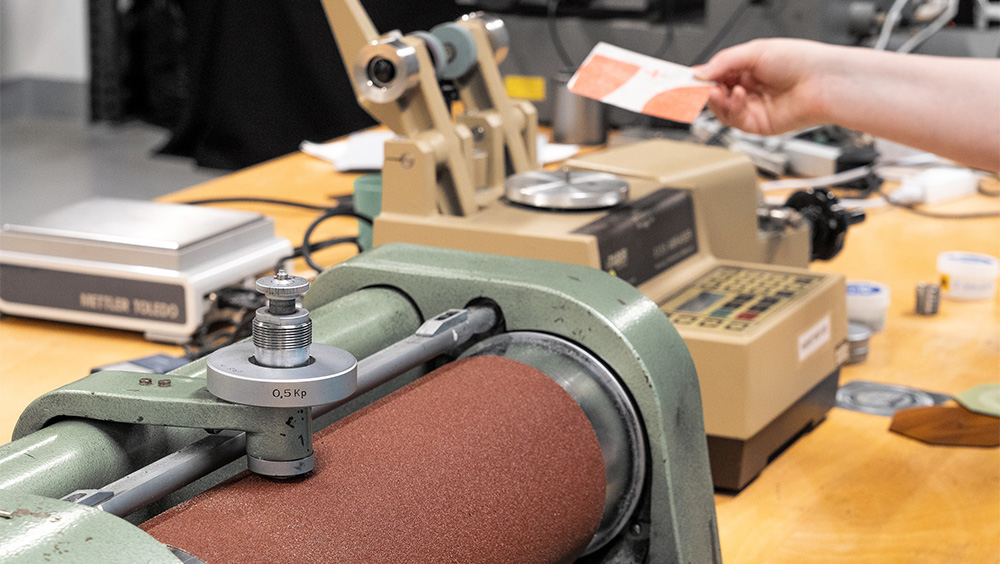SKZ offers innovative test methods for the abrasion resistance of plastics
The SKZ Plastics Center in Würzburg offers abrasion resistance testing of plastics in accordance with international norms and standards as a service. As the abrasion resistance of plastics is an extremely important quality feature in a wide range of applications and industries and also determines the durability of a product, it is crucial to carry out appropriate tests in order to validate material suitability and avoid damage and complaints.

Testing according to DIN ISO 4649 with the rotating cylinder drum at SKZ. (Photo: Luca Hoffmannbeck, SKZ)
Abrasion resistance as an important quality feature - avoiding damage
A number of tests have been established in the plastics sector to determine the abrasion resistance of plastics. These essentially differ in terms of the type of stress and the material class to be tested. The SKZ offers the following tests:
Taber test
In the comparatively universally applicable Taber test according to DIN ISO 9352, DIN EN ISO 5470-1 or ASTM D 4060, abrasion testers are used which are equipped with one or two rotating disks on which abrasive paper or friction wheels are mounted. Different load parameters can be set to simulate different application scenarios. The evaluation can be carried out using optical measuring methods or by determining mass loss.
Rotating cylinder drum
Testing with the rotating cylindrical drum in accordance with DIN ISO 4649 simulates the effects of abrasive friction partners on plastics as they frequently occur in everyday life and is primarily used to characterize the abrasion resistance of elastomers. A special feature is drum abrasion tests in accordance with DIN ISO 22182 for the evaluation of geosynthetics. Here, the samples are placed inside a continuously or periodically rotating drum and are exposed to defined abrasive materials in order to determine their resistance to mechanical wear.
The crockmeter test
The Crockmeter test in accordance with DIN EN ISO 105-X12, which was specially developed for textiles, is also increasingly being used for testing plastics in various areas of application. By simulating a defined frictional load, it enables a quick assessment of the abrasion resistance and color fastness of plastic surfaces and can also be used to simulate cleaning processes, for example.
The pin-on-disk test
The pin-on-disc test in accordance with ASTM G99 or ISO 7148-2 is used to determine the coefficient of friction or wear resistance between two materials in rotation or linear motion. In most cases, a steel or ceramic pin is pressed against a rotating disk with a defined force. This test method is particularly relevant for the characterization of plastics in moving machine parts, such as those used in the automotive and aerospace industries.
The Stuttgart test
The Stuttgart test according to DIN EN 660-1 is still used from time to time to test the wear behavior of resilient floor coverings. The test device imitates a twist-slip movement as caused by footwear and thus enables a particularly practical wear test.
Reliable quality assurance
"The areas of application for abrasion tests are diverse and include industries such as medical technology, construction products, sports and leisure articles, automotive, furniture, flooring and textiles. Companies in these sectors benefit from the precise assessment of the abrasion resistance of their products in order to ensure reliable quality assurance, strengthen competitiveness in the market and increase overall customer satisfaction," says Alexander Ebenbeck, Sales Manager Product Testing and Certification at SKZ.
More about the SKZ testing division

